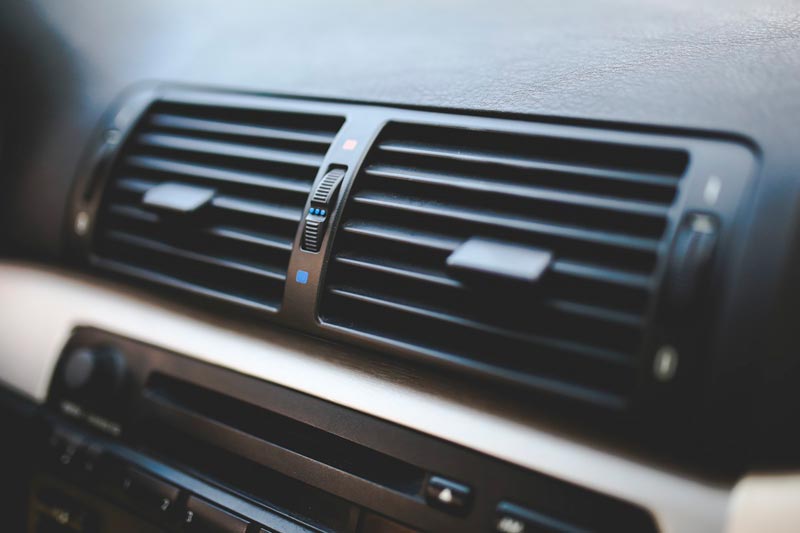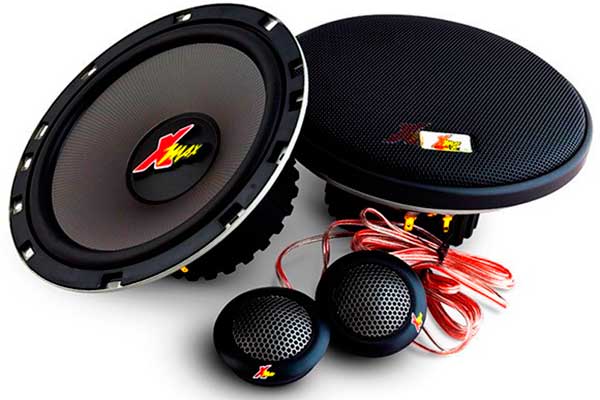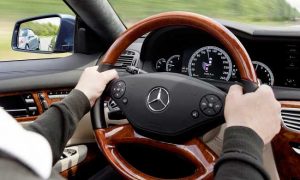 Vibration in a car can occur for a variety of reasons, and the situation is complicated by the fact that the breakage may not show any particular signs.
Vibration in a car can occur for a variety of reasons, and the situation is complicated by the fact that the breakage may not show any particular signs.
If you are faced with a situation when a car vibrates when accelerating, we advise you to look for the cause of malfunction immediately. Our article will help you with this.
We will list the most common reasons for strong vibration during acceleration and help you understand how to solve the problem.
Sources of vibrations when accelerating
An experienced motorist can easily distinguish regular vibrations during acceleration and cause for serious concern.
In the first case, an increase of RPM and the speed of the car will inevitably affect the comfort level, in the second case, the source of the shaking amplification will be a specific malfunction.
Note that these symptoms require diagnosis and immediate elimination. The point is not only in an unpleasant beating on the steering wheel and an increase in the noise in the cabin but also in reducing the level of stability and the likelihood of malfunction progression. The latter factor can lead to costly repairs.
Let’s start with the banalest and frequently occurring reasons.
1. Balancing needed
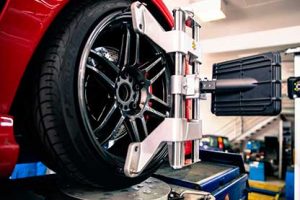 Beating on the steering wheel and the car body with acceleration are inevitable if the wheels are not balanced.
Beating on the steering wheel and the car body with acceleration are inevitable if the wheels are not balanced.
Uneven distribution of mass relative to the center of the wheel leads to such consequences.
The action of multidirectional centrifugal forces leads to the appearance of different-frequency oscillations, which are felt in the car as a beating.
The problem may manifest itself in the following cases:
- Installation of new tires. Replacement of tires on wheels or re-fitting new wheels into old tires is necessarily accompanied by balancing. Even for a manufacturer, achieving ideal weighting and geometrical parameters is a challenging task.
- Loss of old balancing weights. Especially typical for alloy wheels, where the weights are glued to the inside of the wheel. Recall that in the case of steel rims, weights sit in the outer collar of the rim.
- Deformation of tire or rim due to hitting a deep pothole, hitting the curb and other similar obstacles.
- Natural imbalance. During operation, any wheel will lose the established balance. It is recommended to make a planned balancing every 9-12 thousand miles.
2. CV joint
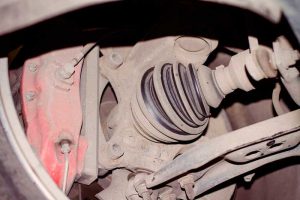 Another hotbed of imbalance often becomes a constant-velocity joint. The device is used for the movable articulation of the drive shaft and gearbox, which allows transmitting drive in different planes (inner CV joint) at the other end of the drive shaft for coupling with the hub (outer CV joint).
Another hotbed of imbalance often becomes a constant-velocity joint. The device is used for the movable articulation of the drive shaft and gearbox, which allows transmitting drive in different planes (inner CV joint) at the other end of the drive shaft for coupling with the hub (outer CV joint).
Most often, the cause of the vibration lies in the inner hinge. In the case of a tripod-type construction, wearing of rollers is observed. In severe cases, the bearing can completely crumble. The wearing of a cup of a tripod is also possible.
A torn dust cover can cause such a malfunction, which can no longer protect against dirt and dust flying from under the wheels. Therefore, periodically check the integrity of the dust covers of CV joints.
3. Driveshaft
It is suitable for the occasion to mention that vibration is guaranteed to appear during acceleration in a car with a drive of irregular geometric shape.
The curved driveshaft will not only rotate around its axis but also provoke parasitic centrifugal forces. As a result, a car during acceleration will receive additional vibrations.
4. Cardan
The problem is typical for cars with rear and all-wheel drive. Worn cardan joint causes a vibration during acceleration.
If you find yourself having a similar problem, pay attention to the following elements:
- crosspieces;
- hanger bearing;
- drive shaft.
Not balanced cardan will lead not only to the beating, but also the subsequent destruction of the joints.
There were cases when the gear shank play was the cause of vibration during acceleration. This also needs attention.
5. Tires
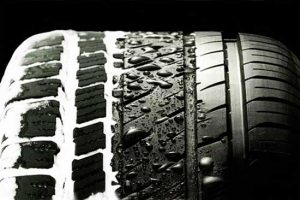 There are frequent cases when the vibration during acceleration appears due to the installation of low-quality tires. Most often these are tires of budget and super budget manufacturers.
There are frequent cases when the vibration during acceleration appears due to the installation of low-quality tires. Most often these are tires of budget and super budget manufacturers.
The peculiarity of such tires is that when checking on a balancing stand, a discrepancy causing discomfort when driving a car may not be noticed. In the second case, balancing only temporarily delay the reappearance of vibrations. Only the replacement of tires can solve the problem in this case.
The next reason for the appearance of unwanted vibrations is typical for owners with low-profile tires. The side cord of such tires does not have the rigidity and elasticity that is inherent in ordinary tires.
Therefore, long parking, especially in the warm season, can cause temporary deformation of the tire at the point of contact with the roadway. Thus, during a short time after the start of the movement vibration during acceleration can be observed. The first kilometers should be overcome with extreme caution.
Asymmetric tire tread wear-out, the appearance of “bumps” will lead to the fact that the suspension elements will experience additional vibration load. Of course, the whole car will vibrate during acceleration.
6. Hub bearing
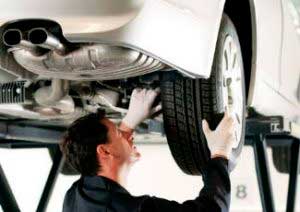 If not only vibration but also a hum is heard during acceleration, then it is safe to say that the hub bearing has broken-down.
If not only vibration but also a hum is heard during acceleration, then it is safe to say that the hub bearing has broken-down.
The situation is quite regular, therefore, at the beginning of the birth of the problem, the operation of the car will not cause any consequences. But it is not worth delaying the repair. An exceedingly worn-out bearing can go to pieces, which will lead to disastrous consequences.
Wheel play indicates the failure of this node. For diagnostics, hang the wheels and shake each of them in the longitudinal and transverse direction. Free play will be a signal for an emergency replacement.
7. Suspension and steering
 Worn-out suspension elements cannot cause permanent or periodic vibrations during movement – their purpose in quenching jerks that come from the roadway.
Worn-out suspension elements cannot cause permanent or periodic vibrations during movement – their purpose in quenching jerks that come from the roadway.
Therefore, a car with a faulty suspension can scour along the road, knocking or squeaking when turning the steering wheel, deaf or sonorous “echoes” of the obstacles overcome.
Note that in the case of worn rubber products, articulated, elastic elements (ball bearings, support bearings, shock absorbers, steering tips, and others), the beating, for example, from the unbalanced wheels will be felt much stronger.
For the safe control of the vehicle, the problem needs to be solved in a complex.
In the case of steering, the variations in the design of various systems do not allow to make unambiguous conclusions.
Explore the engine compartment and engine sounds
If you have determined that the vibration comes from under the hood, most likely the cause will be the incorrect operation of the engine or places of fastening of the vibroloaded elements.
Problems associated with ICE:
- Engine misfires. Many car owners faced the situation where during acceleration engine begins to shake, while the thrust is much weaker than it was. In this case, a comprehensive engine diagnostic is necessary. The problem may be hidden in the ignition system: worn out plugs, spark plug wires, and other elements, the malfunction of which leads to misfire in one or several cylinders.
- Engine cushions. Vibration during acceleration will appear because an increase in RPM increases the centrifugal forces affecting the car body. With a sharp push of the accelerator pedal “on the floor” can be observed significant blows. Made of hard rubber, even new cushions will cause vibrations.
8. Gearbox and clutch drive
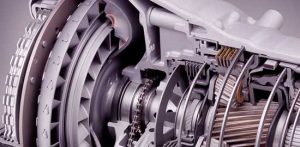 Also, it is necessary to pay attention to places of fastening of a gearbox. Perhaps the cause may be hiding inside the gearbox housing.
Also, it is necessary to pay attention to places of fastening of a gearbox. Perhaps the cause may be hiding inside the gearbox housing.
In the case of a manual transmission for a more accurate diagnosis, it is necessary to pay attention to the factors of the appearance of vibrations or beats.
If the symptoms appear only in a particular speed mode, try driving it one at a time on different gears. For example, if the vibration is noticeable at 40 mi, turn on first 2 gear, then 3 (of course, if gear ratios allow it). In this way, you can more accurately determine the components of the gearbox that cause vibrations.
If there is a deformation of the primary shaft in the gearbox, the vibrations will be noticeable during acceleration on any gear.
An unbalanced flywheel can also cause the symptoms discussed. At the same time, it is worth paying attention to the clutch and release bearing.
If the car has an automatic transmission, check the level and condition of the oil. A too low indicator can become the fault of shocks and vibrations.
9. Exhaust system
Improper mounting of the engine exhaust system can lead to noticeable vibrations in certain ranges of engine operation.
Other reasons
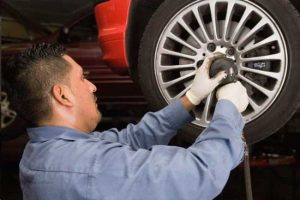 If the body vibrates during acceleration, do not be upset and immediately count a large amount for repair. The following are commonplace and not very cases that can cause discomfort while driving:
If the body vibrates during acceleration, do not be upset and immediately count a large amount for repair. The following are commonplace and not very cases that can cause discomfort while driving:
- dirt or ice block stuck to the inner fellow of the rim. It is not difficult to diagnose sticking of dirt, as tangible beats will arise only after traveling off-road. In winter, every driver must be prepared for such troubles;
- incorrect installation of brake disks or rims. If the attachment plane has not been cleared of contamination or has deformation, this will cause an increase in vibration load during movement;
- discrepancy of the landing sizes of rims. Each rim has its own installation parameters, the violation of which can lead to an imbalance. This mainly concerns bolt pattern of wheels;
- loose mounts of wheels. This is the first thing to check when a beating on the steering wheel is detected. The consequences of neglecting this advice can be deplorable.
Conclusions
So, we tried to understand the main faults that lead to the vibration of the body or the engine when accelerating. Now you can make a diagnosis yourself or go to the specialists. In any case, do not forget that a serious shaking is a significant problem, and therefore we do not recommend to ignore such issues.
In case a car vibrates when accelerating, in motion or even idling, it is vital to search for the cause quickly. Otherwise, everything can lead to an accident or a failure of one of the expensive engine components.

